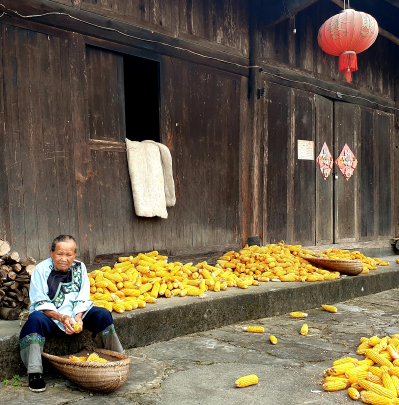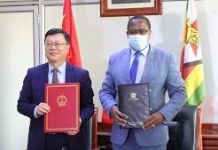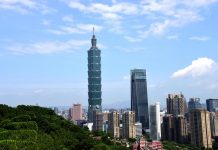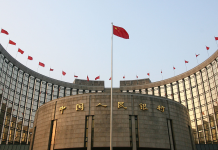
Last month, like the great chef, author and travel documentarian Anthony Bourdain, this intrepid author had no reservations about confronting the tear-jerking, throat-tickling, sense-consuming capsaicin clouds produced by the (in)famous local chili peppers hissing in the hot wok before her. In the kitchen, she stood her ground to carefully capture on camera every step of the process, as well as every detail the local Miao minority chef gave on the recipe as she whipped up a sizzling symphony of vibrant veggies—Hunan style.
Hunan cuisine is the style of Chinese cooking that originates in Hunan Province in central China. It is known for its use of chili peppers and garlic to create full-bodied, fiery flavors.
Although my colleagues and I were not engaging in any live-cooking or live-commerce, we found ourselves wokside in the small kitchen of a hotel catering to the needs of “verified” wanghong (online influencers) in Shibadong Village, literally “the Village of 18 Caves,” in Hunan’s Xiangxi Tujia and Miao Autonomous Prefecture.
The 180-degree lavish panorama of lush green subtropical forest, in combination with the picture-perfect hotel, gives travelers the feeling they’re staying in a premium area. The cabins, resembling shipping containers, are sustainably equipped and dressed to the hi-tech nines, each with their own balcony, seemingly hanging off the mountainside at an altitude of 700 meters above sea level. Many other guests staying at the social-post-worthy hotel even told yours truly, “(Chinese top model) He Sui has stayed in your cabin!”
However, judging this book by its cover and assuming you’re roaming around a five-star resort might be jumping to conclusions, or even mean you’re being seduced by the pitfalls of picturesque poverty. This is because a sneak peek beyond the sensational scenery reveals another picture, one of rural residents trying to slowly catch up with the times—a process that will take, well, time. And lots of it.
Given villages like Shibadong are ubiquitous across China, on a larger scale, a very contemporary conundrum enters the narrative…
China: developing or developed? That is the question.

Model behavior
On August 18, the first commercial flight landed at the brand-new Xiangxi Biancheng Airport—a one-hour drive from Shibadong Village—from Beijing’s Daxing Airport. This opening flight was a milestone in the Xiangxi area’s infrastructure history as well as the local efforts to further expand regional tourism.
Over the past five years, this small dot on the Hunan map has become more and more popular with urbanites seeking refuge from the metropolitan rat race. Local authorities hope the new ability to fly in, instead of drive or train there, will increase travel traffic.
But today’s grade-A lodgings and their bang-up backdrops are a far cry from the Shibadong of 2013, when it was an extremely poor village due to transportation difficulties and unsuitability for agriculture. The village was one of the most impoverished places in China, with more than half of its residents living under the poverty line, defined as the minimum level of income that a person needs to meet their basic needs.
However, 2013 was also the year things took a turn for the better in Shibadong. It was the year the village became the birthplace of China’s targeted poverty alleviation strategy, which in official terms means “tailoring poverty relief policies according to different local conditions.”
Under that initiative, villagers were empowered to establish local pillar industries, including tourism, kiwi fruit farming and Miao ethnic embroidery. One beautiful contrast this author spotted while in Shibadong was between a senior woman and her granddaughter. The woman, confined to doing household chores from a very young age and never taught how to read or write, or how to speak standard Chinese, now sits with her granddaughter every morning as she waits for the 6:30 bus to middle school in an adjacent district. The girl has her heart set on becoming a cardiologist when she grows up.
The village was lifted out of extreme poverty in 2017 and its annual income per capita in 2021 exceeded more than tenfold that in 2013. More broadly, as of December 2020, China had eradicated extreme poverty across the board, the important distinction here being “extreme.”
Years before entertaining top model He on its grounds, Shibadong had already created a model of developing rural industries that’s since been followed nationwide.

Tales of tourism
As eager urban beavers fly into the more unknown parts of China to catch their breath and enjoy a spot of nature, many probably don’t realize that out of a 1.4-billion-strong population, 1 billion Chinese citizens have never set foot on a plane. And judging by the looks of wonder on some faces as the inaugural flight touched down at Xiangxi Airport in August, this author believes a whopping percentage of that 1 billion has never even seen an airplane up close.
In other words, China’s development is incredibly uneven. For instance, much of China’s economic growth is concentrated in the country’s coastal areas. In contrast, China’s central and western regions, like Xinjiang Uygur and Tibet autonomous regions, have seen much less growth and development.
But the urbanites flying in do, often inadvertently, lend their mysterious destinations a helping hand, even putting them on the travel map by streaming or posting about them across social media platforms, specifically the ones most popular with Chinese millennials and Gen Zs: Douyin (China’s TikTok) and lifestyle and e-commerce app Xiaohongshu (Little Red Book). In 2023, of Douyin’s 730 million monthly active users, one in three are under the age of 26.
Generally, this is related to daka culture. Daka (literally “punching a card”) means taking one’s photo in a picture-perfect place to then show off on social media. Pre-pandemic China saw daka travel troupes touring cities to “punch as many destination cards as possible,” according to British-Chinese travel consulting firm Guanxi Group in October 2020. Travel agents soon began offering daka tours and savvy destinations and attractions “built in” striking views and backgrounds to attract the daka army. But the trend proved not as fleeting as the visits it inspires. After three years of COVID-19 prevention and control measures, the daka phenomenon returned—with a vengeance. The hashtag daka had raked in a mind-blowing 12 billion related short videos on Douyin as of September 7.
While chatting on Mount Namjagbarwa—at roughly 4,400 meters above sea level—in Tibet in May, a cyclist told this author whilst taking selfies, “We’ve chosen to cycle our way to Lhasa from Gansu Province so we could slowly adjust to the altitude. This site makes for a perfect pitstop as it’s a real daka setting.” Cycling from one region to another is part of a growing slow travel movement that sees Chinese urbanites exploring their country’s quieter areas. The movement has also led to a rise in mindful tourism that focuses on connecting with local communities.
Zhangxigang is one example of a tiny and once extremely poor village in Tibet that has managed to lift its living standard courtesy of the region’s tourism economy. Freshly painted buildings, new hotels offering visitors tours of the area and traditional archery activities in the surrounding grasslands are all raising Zhangxigang’s appeal to tourists.
“We now have it all and hope to expand our services sooner rather than later,” Tsering Tashi, a local who runs a small family hotel in the village together with his wife Padma. “Right now, most travelers will stay here for one or two nights; if we can offer them more recreational services or take them to scenic spots a bit farther away, they might stay longer and contribute more to our earnings.”
The hashtag “ethnic travel shoots” is rapidly rising through the daka sub-ranks, with thousands of new related posts and videos popping up every day, especially with travel season now underway. Minority-culture-themed photography has become a main course on the travel menu for which the country’s Gen Zs—from wanghong to John and Jane Wang—have developed a taste. The ethnic travel shoot trend often involves hiring local camera crews, going to historical sites and hamming it up for the camera, all dolled up in local ethnic dress and makeup.
From photography and fashion studios specializing in taking traditional Uygur portraits at locations within the ancient walls of Xinjiang’s Kashgar City, to tourists in Lhasa striking a pose between pilgrims performing the kora, a form of pilgrimage and meditation in the Tibetan Buddhist tradition that includes circumambulations around temples and repeated prostrations at holy sites.
“It’s just a unique and fun thing to do. You pay roughly 800 yuan ($113) to get your makeup and hair done, get help choosing a traditional local outfit and accessories that are right for you and then get your pics taken,” a woman in her early 20s from Guangdong Province in south China told this author during her visit to Lhasa in May.
Ethnic travel shoots are a hot commodity both in terms of supply and demand and help shine a striking, sophisticated and fashionable (social media) spotlight on their settings.
The batik biz
As a Sinologist who explores China through the lens of fashion, I would like to mull over some more modish ways of improving livelihoods in villages. So we make our way back to the Shibadong area in rural Hunan to take a quick dive into the local cloth-dyeing business. Or rather, the batik biz.
For many people, batik, wax-resist dyeing of cloth, is merely a craft. But, for the Miao people, batik is an integral part of their ancient culture and history. Since the Miao don’t have their own written language, the batik patterns have become an essential visual language that tells their cultural, religious and historical story, both to their newest generations and to the outside world.
Contemporary batik is more sophisticated than traditional creations, which usually feature flowers, birds and many more of Mother Nature’s creatures. The Miao women and batik artists have now begun using new patterns and techniques to create products that speak to the imagination of a live-commerce generation.
The process of making batik is elaborate, but in sum, melted wax is applied by hand to fabric in a manner that leaves the waxed parts uncolored after dyeing. The material used in the batik’s dye is indigo and fabrics are then rinsed and air-dried. The latter process is repeated a few times to create more complex and subtle patterns.
One master of the craft is octogenarian Wang Qingxiang, who lives in a tiny Huayuan County community a 40-minute drive through the mountains from Shibadong. The Jiezhong Batiks Workshop, where she occasionally still comes to demonstrate the original “guide to batik” for visitors, also livestreams her craft on Douyin, which has sent requests for her original designs soaring and in turn has sparked a live-commerce craze.
China is the pioneer and world leader in livestreaming commerce, or live-commerce. Similar to those American home shopping TV channels of the 1980s, live-commerce is a form of online shopping that offers a real-time, interactive and social experience. With China’s market forecast to reach 5 trillion yuan ($682.5 billion) by the end of this year, according to Statista.com, this phenomenon paves the way for a new era of consumer engagement and revenue growth.
But 80-something Wang, her face a mesmerizing map of lines that tell the stories of her life as much as her batik fabric tells those of her ancestors, is still the face of China as a whole, a country that, overall, is very much still striving to catch up with its superbly developed first-tier bubbles. It is the face of China’s magnificent, multilayered, multicolored, multi-ethnic culture. –The Daily Mail-Beijing Review news exchange item





